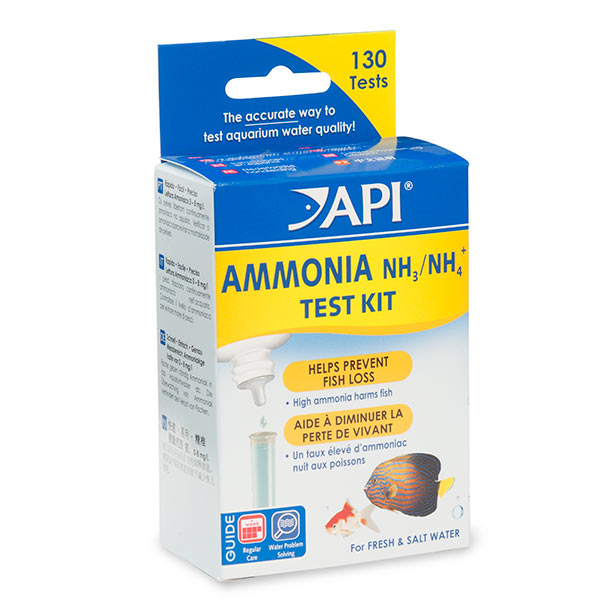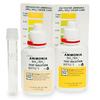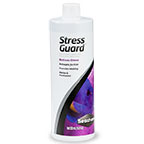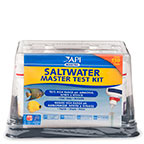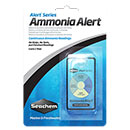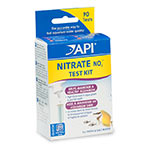Additional sizes may be available!
Additional sizes may be available! Email me when availableOverview
| * | Easy-to-use liquid test solution for ammonia |
| * | Essential when cycling a new aquarium or maintaining ideal water parameters |
| * | Match the color of the test solution against color chart for accurate test results |
Ammonia Test Kit – Ammonia, constantly released into the aquarium, is the number one killer of tropical fish. Fast, easy and accurate, this test kit measures ammonia levels from 0 to 7 ppm. 130 tests per kit. For fresh/saltwater.
Why Test For Ammonia?
Fish continually release ammonia (NH3) directly into the water through their gills, urine, and solid waste. Uneaten food and other decaying organic matter also add ammonia to the water. A natural mechanism exists that controls ammonia - the biological filter. It is made up of nitrifying bacteria, which live in the substrate and biological filter media. However, as with any natural process, imbalances can occur. Testing for the presence of toxic ammonia is essential, so that once detected, steps can be taken to remove it. Otherwise, ammonia will damage gill membranes, and prevent fish from carrying on normal respiration. High levels of ammonia quickly lead to fish death. Even trace amounts stress fish, suppressing their immune system and thereby increasing the likelihood of disease outbreaks and subsequent fish loss.
Directions for Testing Ammonia Levels
- Fill a clean test tube with 5 ml of water to be tested (to the line on the tube).
- Add 8 drops from Ammonia Test Solution Bottle #1, holding the dropper bottle upside down in a completely vertical position to ensure uniformity of drops added to the water sample.
- Add 8 drops from Ammonia Test Solution Bottle #2, holding the dropper bottle upside down in a completely vertical position to ensure uniformity of drops added to the water sample.
- Cap the test tube and shake vigorously for 5 seconds. Do not hold finger over the open end of the tube, as this may affect the test results.
- Wait 5 minutes for the color to develop.
- Read the test results by matching the test solution against the Ammonia Test Color Chart. The tube should be viewed against the white area beside the color chart. Color comparisons are best made in a well-lit area. The closest match indicates the ppm (mg/L) of ammonia in the water sample. Rinse the test tube with clean water after each use.
What The Test Results Mean
In new freshwater aquariums, the ammonia level may surge to 6 ppm (mg/L) or more, and then fall rapidly as the biological filter becomes established. The ammonia will be converted to nitrite (also toxic), then to nitrate. This process may take several weeks. Use Aquarium Pharmaceuticals Stress Zyme to speed up the development of the biological filter. In an established aquarium or pond, the ammonia level should always remain at 0 ppm (mg/L). The presence of ammonia indicates possible over-feeding, too many fish, or inadequate biological filtration.
The ammonia level is not an indication of the nitrite level; Nitrite is another toxic waste material, which must be tested separately.
Monitoring Ammonia Levels
Regular testing is necessary to make sure the ammonia level is safe. Aquarium and pond water should be tested for ammonia every other day when it is first set up, and once a week after the biological filter has been established (in about 4 to 6 weeks).
Detoxifying Ammonia Using Ammo-Lock
To detoxify ammonia, use Aquarium Pharmaceuticals Ammo-Lock to instantly lock up ammonia. Ammo-Lock does not remove ammonia; it simply converts toxic ammonia to a non-toxic form. Ammonia test kits will still test positive for ammonia, even though it is non-toxic. The biological filter will then consume the non-toxic ammonia, converting it to nitrite and then to nitrate.


